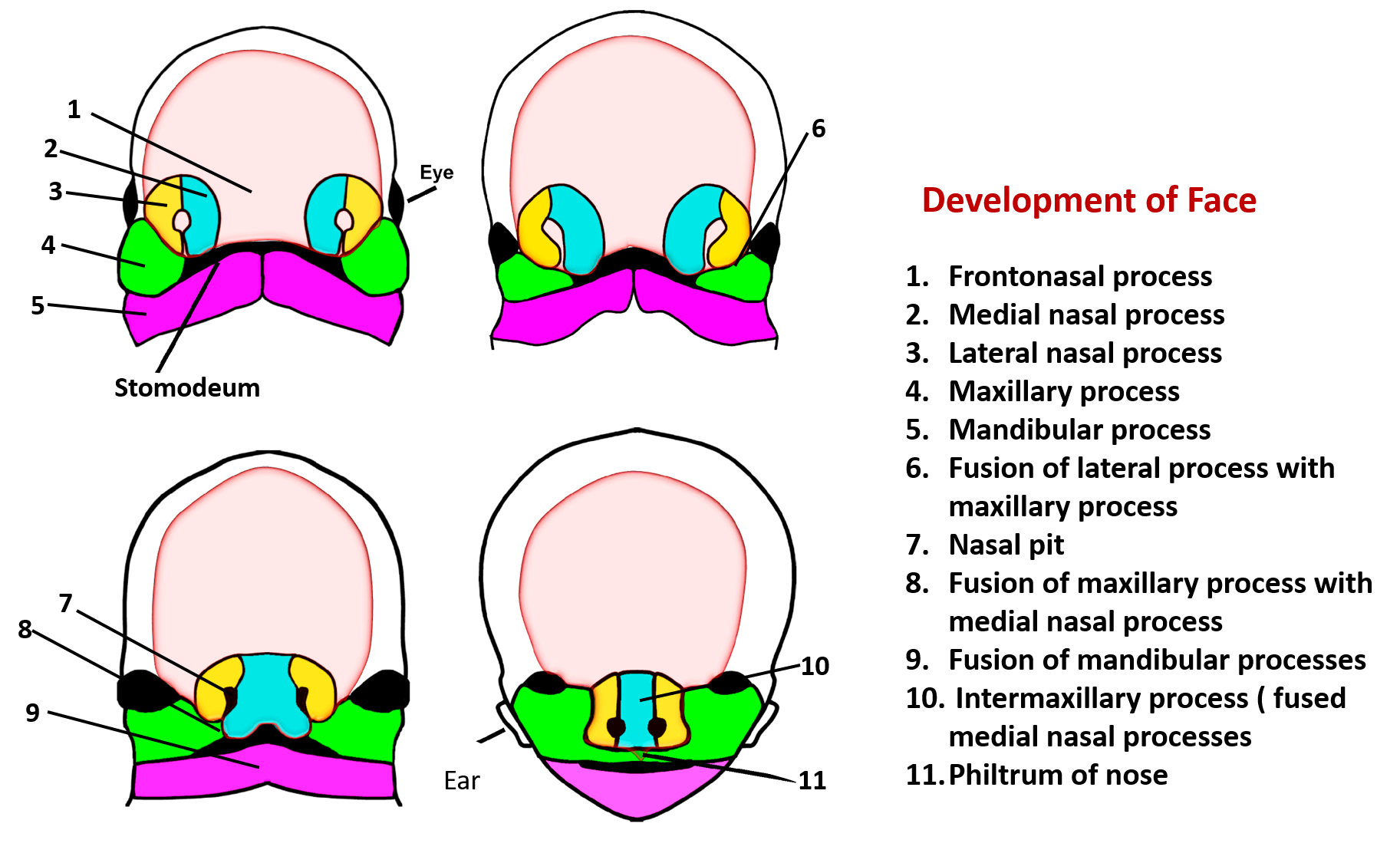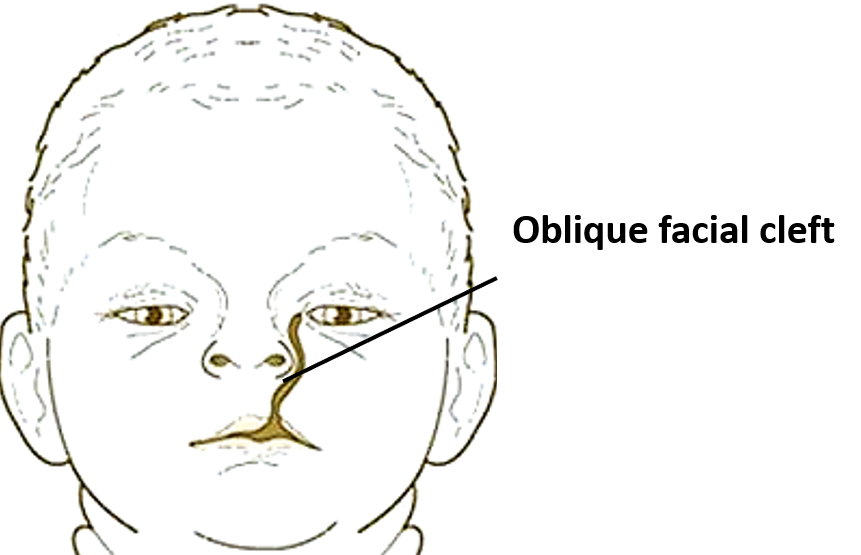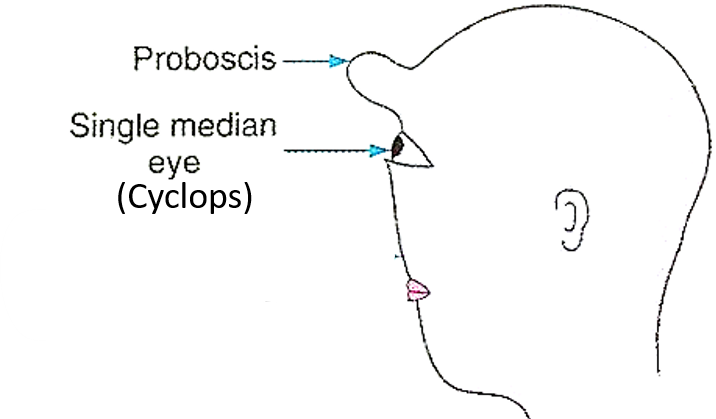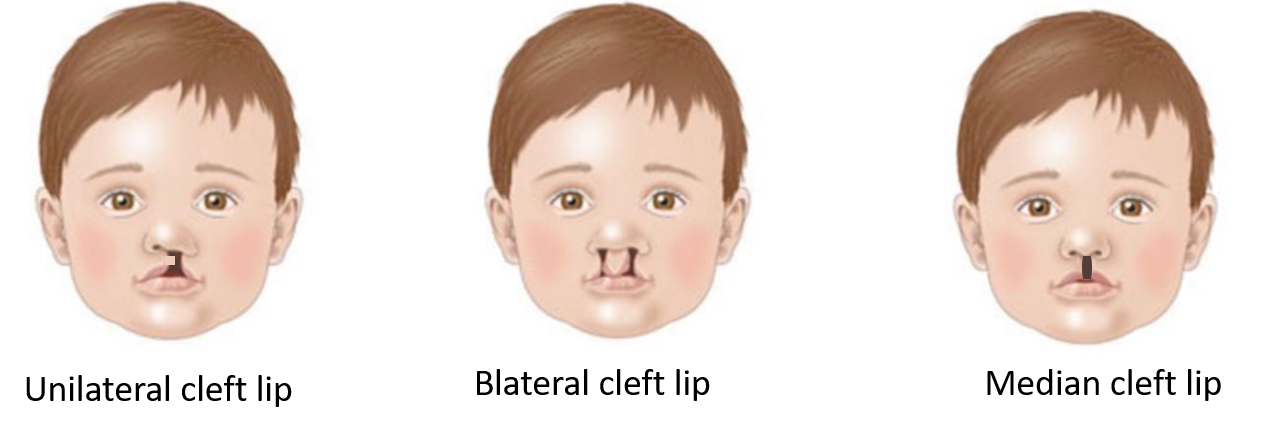DEVELOPMENT OF FACE
Q. Identify the structures labelled 1-11.

Q. Name the embryological structures that give rise to components of face.
A. Following embryological structures form face:
- Frontonasal process
- A pair of medial nasal processes.
- A pair of lateral nasal processes.
- A pair of maxillary processes.
- A pair of mandibular processes.
Q. Name the regions of face that are derived from the various embryological structures:
| Embryological Region | Region of Face | Nerve Supply |
|---|---|---|
| Frontonasal process | Forehead, nasal bridge and nasal septum | Ophthalmic |
| Intermaxillary process ( fused medial nasal process) | Tip of nose and philtrum of upper lip | Ophthalmic (except philtrum which is supplied by maxillary) |
| Lateral nasal process | Ala and lateral wall of nose | Ophthalmic |
| Maxillary process | Upper lip lateral to philtrum, part of cheeks | Maxillary |
| Mandibular process | Lower lip, chin and lower part of cheeks | Mandibular |
Q. What is the embryological basis of oblique facial cleft?
A. The non-fusion of maxillary and lateral nasal process results in a cleft which extends from the medial angle of eye to the mouth.

Q. What is probosis and cyclops?
A. When the nose is present as a cylindrical projection juct below the forehead, it is called probosis. It is often associated with the fusion of the two eyes (Cyclops).

Q. What is ‘Harelip’?
A. The upper lip of the hare normally has a cleft. hence the term is used for clefts of upper lip.
- Unilateral cleft lip harelip: Failure of fusion of maxillary process withe the medial nasal process on one side.
- Bilateral cleft lip: Failure of fusion of maxillary processes withe the medial nasal processes on both the sides.
- Median cleft of upper lip (true harelip): Defective development of intermaxillary segment of frontonasal process i.e. failure of fusion of medial nasal processes.

